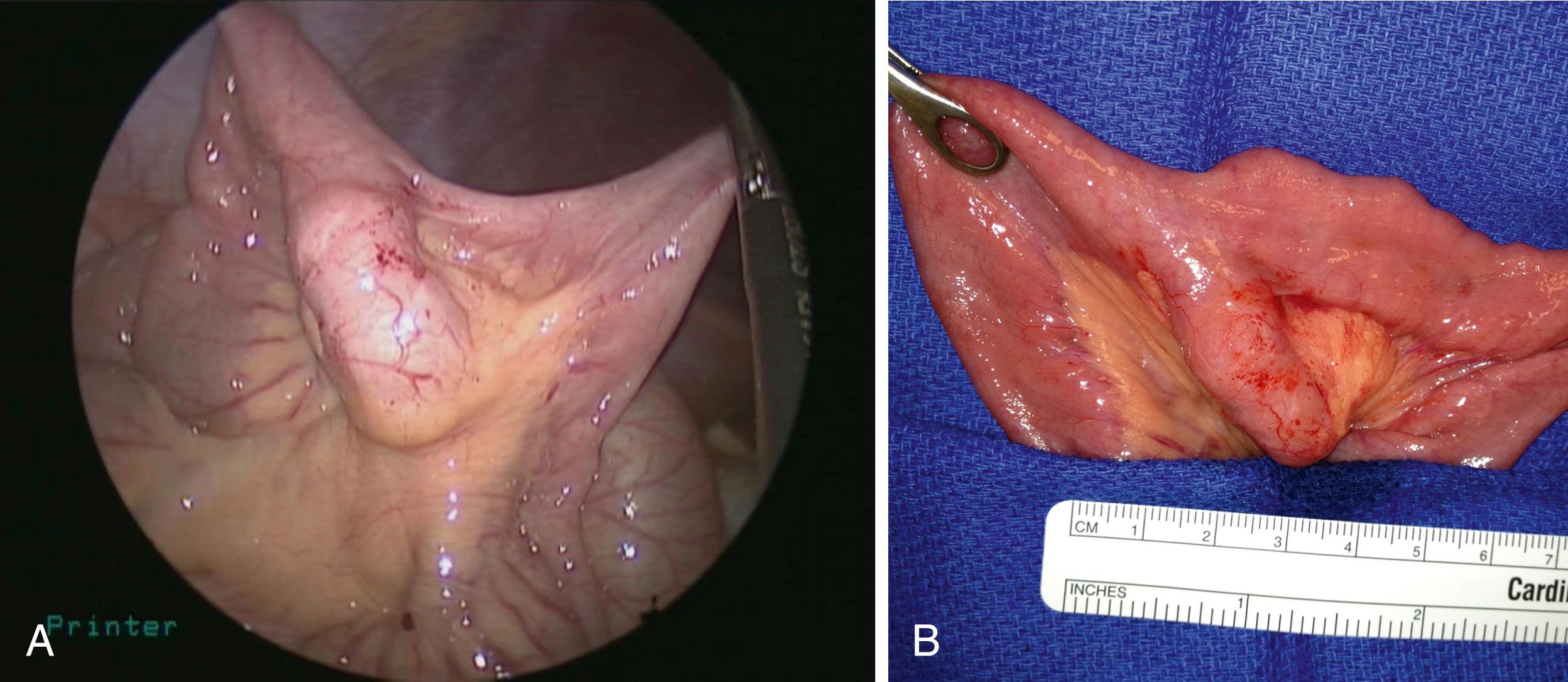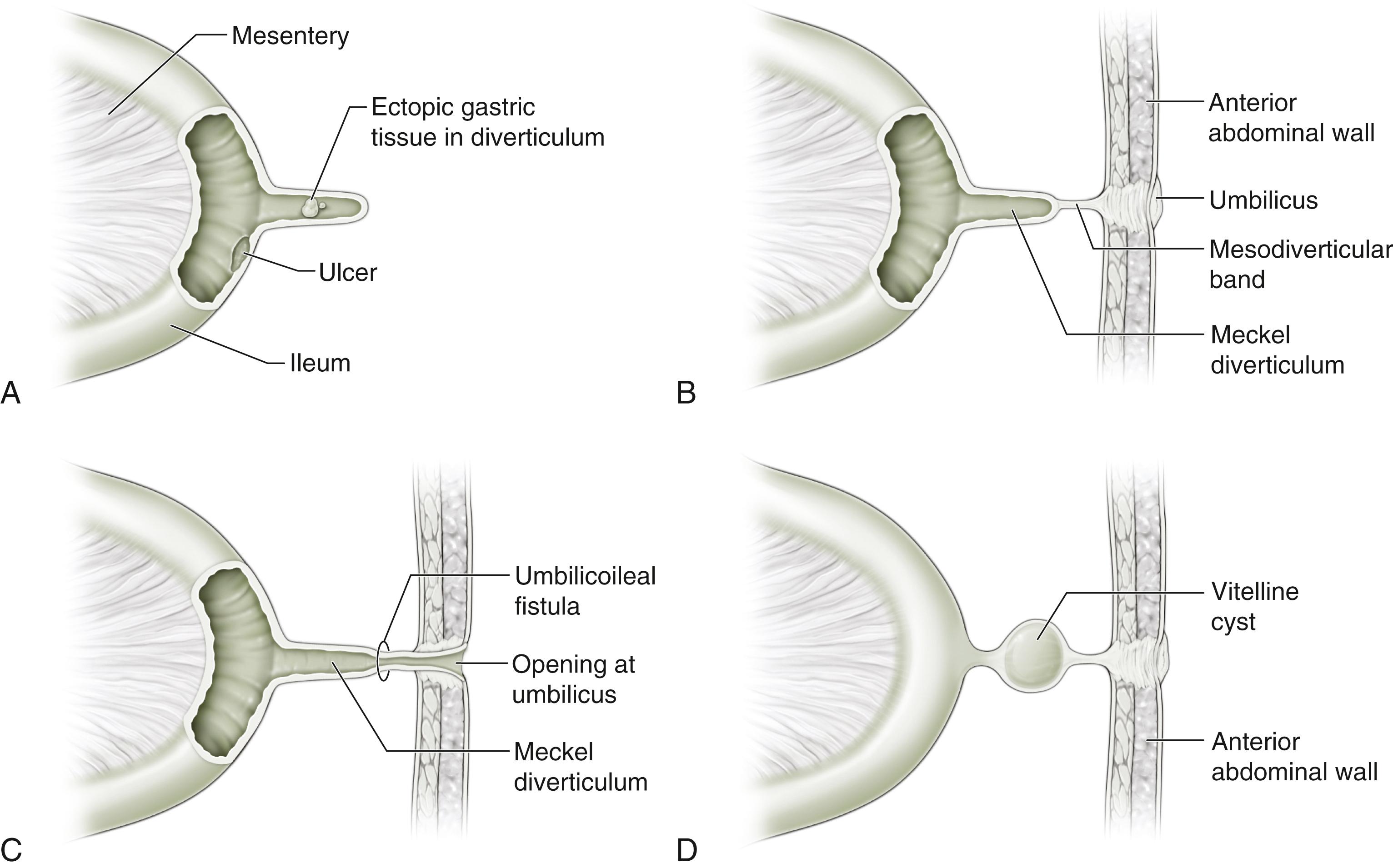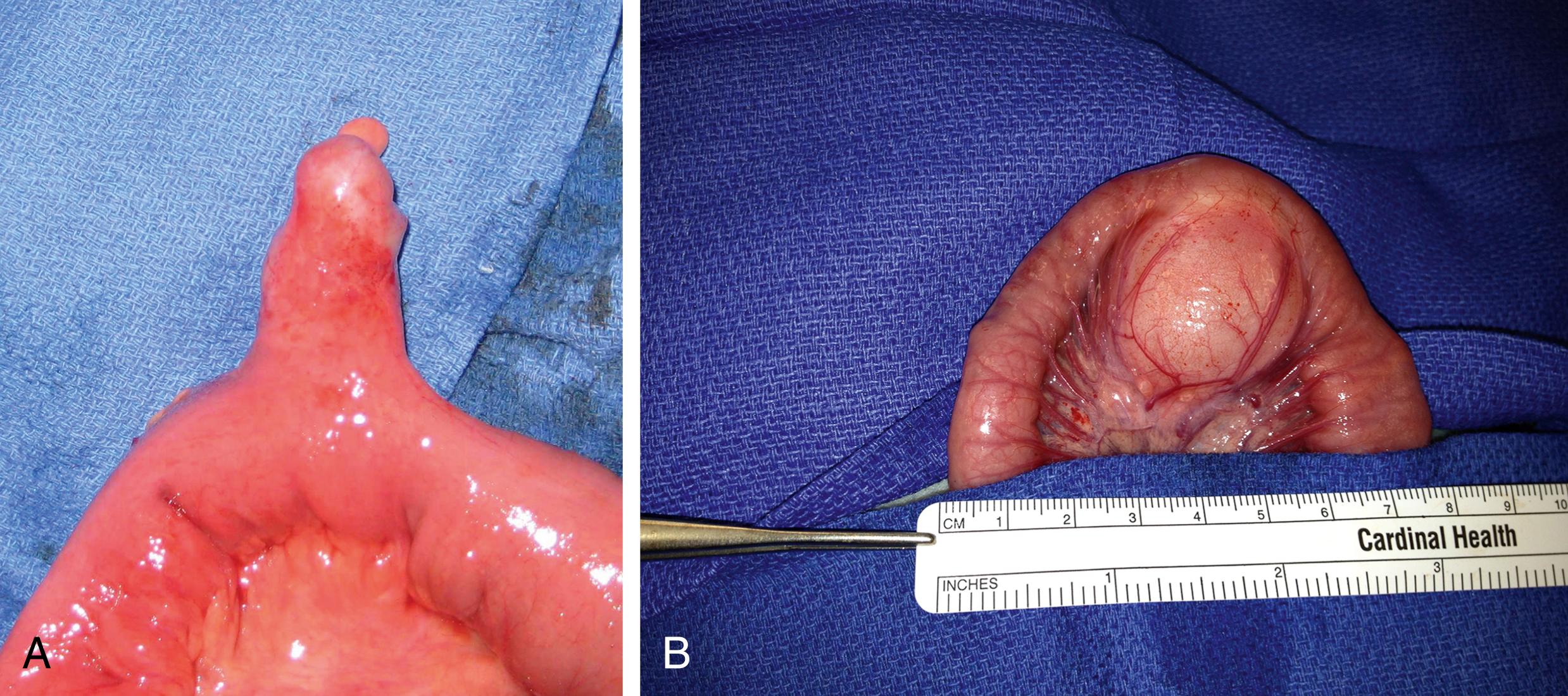Physical Address
304 North Cardinal St.
Dorchester Center, MA 02124
Meckel diverticula are located along the antimesenteric border of the distal ileum and may contain rests of ectopic tissue. They are the most common congenital anomaly of the alimentary tract with an estimated prevalence of 1% to 4% in the general population and are more common in children born with major malformations of the umbilicus, alimentary tract, central nervous system, and cardiovascular system. , The embryologic development of a Meckel diverticulum is believed to result from the incomplete obliteration of the omphalomesenteric (vitelline) duct, resulting in an outpocketing of distal ileum ( Fig. 53.1 ). Possible mechanisms for development of heterotopic tissue within the duct include maturation of multipotential cells within the diverticular wall or implantation of mature cell rests during maturation of the gut; however, the exact mechanism is unknown.

Meckel diverticula may be clinically silent at any age. Children younger than the age of 4 are at greatest risk of having a Meckel diverticulum causing symptoms. Common clinical presentations in decreasing order of frequency include intestinal obstruction, gastrointestinal (GI) bleeding, and intussusception. Less common presentations include acute inflammation or Meckel diverticulitis, umbilical anomalies, and Littre hernia (Meckel diverticulum within an inguinal hernia sac).
This entity was initially described by the German surgeon Wilhelm Fabricius Hildanus in 1598, but it was the German comparative anatomist Sir Johann Friedrich Meckel who described its embryologic origin in 1809. Meckel diverticulum garners substantial attention in the medical literature but is not unique to humans. It has been described in a wide array of animals including swine, horses, rats, calves, geese, duck, fowl, and dogs.
The vast majority of publications on Meckel diverticula and its clinical sequelae come from case reports and single-institution case series. Very little high-quality data about its epidemiology and natural history exist. A recent report queried administrative data from 43 American children’s hospitals during 2007 and 2008 and identified 815 patients younger than 18 years of age who underwent a Meckel diverticulectomy. These data confirmed that Meckel diverticula are found twice as often in males (2.3:1) and noted that half of children requiring surgery for a symptomatic Meckel diverticulum had the procedure before their fourth birthday. The remainder of cases were evenly distributed among children between 4 and 17 years of age.
The vitelline duct acts as a communicating tract between the embryonic yolk sac and its primitive midgut during early human development. During the eighth week of gestation the vitelline duct is normally obliterated as the placenta replaces the yolk sac as the primary source for fetal nutrition. A Meckel diverticulum develops when incomplete obliteration of the vitelline duct occurs between the fifth and seventh week of life as the bowel settles into its permanent position in the abdominal cavity.
The vitelline duct derives its blood supply from paired vitelline arteries. As alimentary tract development proceeds, the left vitelline artery involutes and the right vitelline artery becomes the superior mesenteric artery. Therefore the blood supply of a Meckel diverticulum arises directly from the midgut mesentery. Failed obliteration of the vitelline duct produces several alimentary tract anomalies, the most common of which is a Meckel diverticulum. Other anomalies include a vitelline fistula, which occurs when the vitelline duct remains patent, forming a direct connection between the umbilicus and the ileum. This may result in seepage of bilious intestinal contents from the umbilicus. Alternatively, both ends can develop into fibrous cords while the midportion forms a vitelline cyst. Finally, a fibrous cord can extend from the Meckel diverticulum to the umbilicus, creating a fixed point around which bowel loops may become entangled, causing a bowel obstruction ( Fig. 53.2 ).

A Meckel diverticulum is a true diverticulum containing all three layers of the bowel wall. Its location along the antimesenteric border of the distal ileum is consistently within 100 cm of the ileocecal valve ( Fig. 53.3A ). The average length of a Meckel diverticulum is approximately 3 cm but can range from 1 to 26 cm. Besides normal ileal mucosa, up to 60% of these diverticula contain ectopic tissue, which is most commonly gastric or pancreatic and on rare occasions may contain duodenal or colonic mucosa. , The embryologic origin of the ectopic tissue in Meckel diverticula remains unknown. Other congenital malformations of the distal ileum include intestinal duplications ( Fig. 53.3B ).

Become a Clinical Tree membership for Full access and enjoy Unlimited articles
If you are a member. Log in here